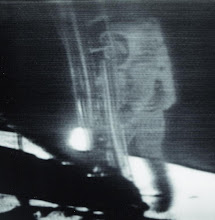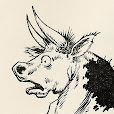


I can't get enough of vintage hand-tinted photographs, and recently bought these examples. They're from the Winter Carnival in St. Paul, Minnesota, and the buildings are called Ice Palaces or, in the case of the bottom image, the Ice Court. There was a huge skating rink in front of that semi-circular structure. Each has the date 1938 on the back, but it seems the first one is from 1939, the second from 1937, and the last from '38. They're stamped Arrow Photo Service, Minneapolis, Minn.
Why was it important to color these photos to sell to tourists?
"At night electric lights illuminated these crystal palaces in patterns of changing color." "Their brilliant lighting consumed as much electricity in ten days as a town of 7,000 inhabitants normally required in a year." ("Ice Palaces" by Fred Anderes and Ann Agranoff; Abbeville Press, Inc., New York , 1983.)
There is some wonderful related imagery
here.
And just because I'm easily distracted and enjoy vernacular architecture, too, I'm adding this image of more great ice structures, an Inuit village on Baffin Island circa 1865.
.jpg)


.jpg)




.jpg)







.jpg)
.jpg)









